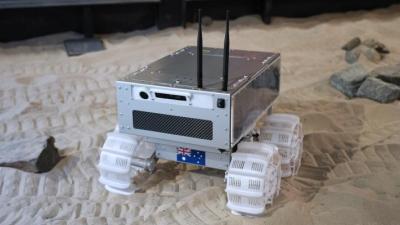Australia’s Steady March Towards Space
The list of countries to achieve their own successful orbital space launch is a short one, almost as small as the exclusive club of states that possess nuclear weapons. The …read more


The list of countries to achieve their own successful orbital space launch is a short one, almost as small as the exclusive club of states that possess nuclear weapons. The Soviet Union was first off the rank in 1957, with the United States close behind in 1958, and a gaggle of other aerospace-adept states followed in the 1960s, 1970s, and 1980s. Italy, Iran, North Korea and South Korea have all joined the list since the dawn of the new millennium.
Absent from the list stands Australia. The proud island nation has never stood out as a player in the field of space exploration, despite offering ground station assistance to many missions from other nations over the years. However, the country has continued to inch its way to the top of the atmosphere, establishing its own space agency in 2018. Since then, development has continued apace, and the country’s first orbital launch appears to be just around the corner.
Space, Down Under

The establishment of the Australian Space Agency (ASA) took place relatively recently. The matter was seen to be long overdue from an OECD member country; by 2008, Australia was the only one left without a national space agency since previous state authorities had been disbanded in 1996. This was despite many facilities across the country contributing to international missions, providing critical radio downlink services and even welcoming JAXA’s Hayabusa2 spacecraft back to Earth.
Eventually, a groundswell grew, pressuring the government to put Australia on the right footing to seize growing opportunities in the space arena. Things came to a head in 2018, when the government established ASA to “support the growth and transformation of Australia’s space industry.”
ASA would serve a somewhat different role compared to organizations like NASA (USA) and ESA (EU). Many space agencies in other nations focus on developing launch vehicles and missions in-house, collaborating with international partners and aerospace companies in turn to do so. However, for ASA, the agency is more focused on supporting and developing the local space industry rather than doing the engineering work of getting to space itself.
Orbital Upstarts
Just because the government isn’t building its own rockets, doesn’t mean that Australia isn’t trying to get to orbit. That goal is the diehard mission of Gilmour Space Technologies. The space startup was founded in 2013, and established its rocketry program in 2015, and has been marching towards orbit ever since. As is often the way, the journey has been challenging, but the payoff of genuine space flight is growing ever closer.
Gilmour Space moved fast, launching its first hybrid rocket back in 2016. The successful suborbital launch proved to be a useful demonstration of the company’s efforts to produce a rocket that used 3D-printed fuel. This early milestone aided the company to secure investment that would support its push to grander launches at greater scale. The company’s next major launch was planned for 2019, but frustration struck—when the larger One Vision rocket suffered a failure just 7 seconds prior to liftoff. Undeterred, the company continued development of a larger rocket, taking on further investment and signing contracts to launch payloads to orbit in the ensuing years.
Gilmour Space has worked hard to develop its hybrid rocket engines in-house.
With orbital launches and commercial payload deliveries the ultimate goal, it wasn’t enough to just develop a rocket. Working with the Australian government, Gilmour Space established the Bowen Orbital Spaceport in early 2024—a launchpad suitable for the scale of its intended space missions. Located on Queensland’s Gold Coast, it’s just 20 degrees south of the equator—closer than Cape Canaveral, and useful for accessing low- to mid-inclination equatorial orbits. The hope was to gain approval to launch later that year, but thus far, no test flights have taken place. Licensing issues around the launch have meant the company has had to hold back on shooting for orbit.
The rocket with which Gilmour Space intends to get there is called Eris. In Block 1 configuration, it stands 25 meters tall, and is intended to launch payloads up to 300 kg into low-Earth orbits. It’s a three-stage design. It uses four of Gilmour’s Sirius hybrid rocket motors in the first stage, and just one in the second stage. The third stage has a smaller liquid rocket engine of Gilmour’s design, named Phoenix. The rocket was first staged vertically on the launch pad in early 2024, and a later “dress rehearsal” for launch was performed in September, with the rocket fully fueled. However, flight did not take place, as launch permits were still pending from Australia’s Civil Aviation Safety Authority (CASA).
The Eris rocket was first vertically erected on the launchpad in 2024, but progress towards launch has been slow since then.
After a number of regulatory issues, the company’s first launch of Eris was slated for March 15, 2025. However, that day came and passed, even with CASA approval, as the required approvals were still not available from the Australian Space Agency. Delays have hurt the company’s finances, hampering its ability to raise further funds. As for the rocket itself, hopes for Eris’s performance at this stage remain limited, even if you ask those at Gilmour Space. Earlier this month, founder Adam Gilmour spoke to the Sydney Morning Herald on his expectations for the initial launch. Realistic about the proposition of hitting orbit on the company first attempt, he expects it to take several launches to achieve, with some teething problems to come. “It’s very hard to test an orbital rocket without just flying it,” he told the Herald. “We don’t have high expectations we’ll get to orbit… I’d personally be happy to get off the pad.”
Despite the trepidation, Eris stands as Australia’s closest shot at hitting the bigtime outside the atmosphere. Government approvals and technical hurdles will still need to be overcome, with the Australian Space Agency noting that the company still has licence conditions to meet before a full launch is approved. Still, before the year is out, Australia might join that vaunted list of nations that have leapt beyond the ground to circle the Earth from above. It will be a proud day when that comes to pass.













































































































































































![[The AI Show Episode 142]: ChatGPT’s New Image Generator, Studio Ghibli Craze and Backlash, Gemini 2.5, OpenAI Academy, 4o Updates, Vibe Marketing & xAI Acquires X](https://www.marketingaiinstitute.com/hubfs/ep%20142%20cover.png)































































































































![[DEALS] Microsoft Office Professional 2021 for Windows: Lifetime License (75% off) & Other Deals Up To 98% Off – Offers End Soon!](https://www.javacodegeeks.com/wp-content/uploads/2012/12/jcg-logo.jpg)













































































































































_Anthony_Brown_Alamy.jpg?#)
_Hanna_Kuprevich_Alamy.jpg?#)




.png?#)

























































































![Hands-on: We got to play Nintendo Switch 2 for nearly six hours yesterday [Video]](https://i0.wp.com/9to5toys.com/wp-content/uploads/sites/5/2025/04/Switch-FI-.jpg.jpg?resize=1200%2C628&ssl=1)
![Fitbit redesigns Water stats and logging on Android, iOS [U]](https://i0.wp.com/9to5google.com/wp-content/uploads/sites/4/2023/03/fitbit-logo-2.jpg?resize=1200%2C628&quality=82&strip=all&ssl=1)














![YouTube Announces New Creation Tools for Shorts [Video]](https://www.iclarified.com/images/news/96923/96923/96923-640.jpg)

![Apple Faces New Tariffs but Has Options to Soften the Blow [Kuo]](https://www.iclarified.com/images/news/96921/96921/96921-640.jpg)


































































































































![Chip Glitching 101 with [Hash]](https://hackaday.com/wp-content/uploads/2025/03/glitching.jpeg?#)

